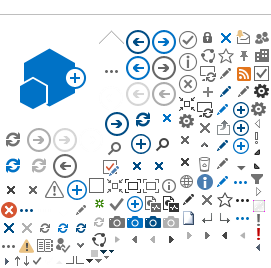Super MuSR will deliver enhanced capacity and capability relevant to a wide range of studies including Faraday Battery Challenge projects to one of the most oversubscribed ISIS instruments.
Technique: Muon spectroscopy
Contact: Peter BakerWhy do we need Super MuSR?
The upgrade will extend the capabilities to a far wider range of complex materials including liquid crystal dynamics, the antioxidant capacity of vitamins, and developing fundamental understanding of reaction kinetics. Super MuSR will support key government priorities in Net Zero, Clean growth, life sciences and quantum technologies.
What are the unique capabilities or reasons behind the upgrade?
Super MuSR provides the next generation of muon spectroscopy, enabling new studies with enhanced performance giving access to future functional materials and in-situ battery research with industrial partners such as Toyota.
Watch Dr Eddie Cussen from the University of Sheffield talk about Super MuSR and it's applications in ion diffusion in materials and operando batteries:
Watch Stephen Blundell from the University of Oxford talk about Super MuSR and Materials for the Future:
Technical success criteria
• Count rate improvement of a factor of 20 through improved detector array with current time resolution maintained
• Time resolution increase of factor of 6-10 whilst maintaining present count rate
• Higher transverse fields available through installation of spin rotators in the beamline (giving combined spin rotation of around 70o).
Project summary
Super-MuSR is an upgrade of the MuSR instrument to increase its counting rate and time resolution by over an order of magnitude. The current instrument has 64 detectors and follows a simple beamline consisting of slits, steering magnets, and two focussing quadrupoles. The planned instrument will have over 600 detectors with two spin rotators and a pulse slicer added to the beamline. The anticipated performance improvement is shown in the figure below with the science areas that will benefit from the improved capabilities.

A detailed summary of the project is provided in: SuperMuSR.pdf.
Project goals
The current MuSR instrument programme focusses on superconductivity and magnetism, using the muon's excellent sensitivity to weak magnetic fields to obtain many significant results. The principal limits on possible experiments are the time resolution, limiting the maximum fields that can be measured, and the counting rate, limiting the statistical quality of the data. Super-MuSR overcomes both of these limitations.
The increased time resolution increases the magnetic
fields that can be applied to superconducting samples and measured
inside magnetic samples. For superconductors this provides another way
to investigate pairing symmetries and many new ordered magnetic materials will be possible to study at ISIS, particularly transition metal oxides and intermetallic systems.
The increased counting rate will increase the
sensitivity to weak magnetic effects like time-reversal symmetry
breaking in exotic superconductors and the magnetism of molecular
systems, as well as opening up studies of quantum coherence in
muon-fluorine bound states and in-operando measurements of battery
materials.
Technical details
Current the time resolution of the muon instruments at ISIS is limited by the time width of the pulse of muons reaching the instrument. To improve the time resolution the Super-MuSR beamline will include a pulse slicer, which removes the ends of each muon pulse so that the range of muon arrival times is reduced by a factor of up to ten. This is done by applying a large electric field perpendicular to the beam, stopping muons reaching the instrument, then quickly switching to the opposite large electric field. As the field changes through zero a short pulse of muons is able to reach the instrument. Similar technologies are already used in the muon beamline to distribute the beam pulses between multiple instruments and in the main ISIS accelerator.
Many
muon measurements are carried out in magnetic fields perpendicular to
the spin direction of the muons so that they will precess in the applied
field. The primary muon beamline at ISIS provides muons with their
spins anti-parallel to their momentum so these transverse field
measurements are currently done using fields perpendicular to the
beamline. To use the increased field range provided by the pulse slicer
it is instead necessary to use spin rotators to rotate the muon spins in
flight as they approach the instrument, keeping the measurement field
along the beam axis. This avoids the muons being deflected away from the
sample by a field perpendicular to their momentum.
To increase the
counting rate the Super-MuSR detector array will be far more highly
segmented than the current MuSR detectors and will cover a larger solid
angle around the sample position. New data acquisition electronics will
also allow a higher counting rate for each segment. This combination
will increase the data collection rate twenty-fold for large samples and collect more than twice as much information per implanted muon, which will improve the performance on smaller samples.
Other improvements include the 'flypast' mode of operation already available on the other ISIS muon instruments for measurements of small samples, where muons that don't stop in the sample are able to fly past it and out of the instrument without generating counts in the detectors. This will benefit significantly from the smaller beam spot available on the MuSR arm of the primary muon beamline.
The Super-MuSR beamline layout is illustrated in the picture below, showing the two spin rotators, the pulse slicer, focussing quadrupoles, and new spectrometer.

A list of the contributors to the Super-MuSR project can be found at: Contributors.
